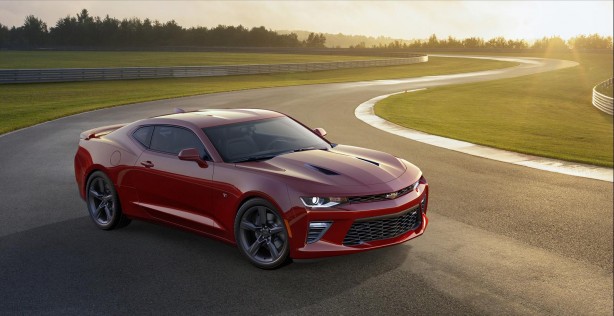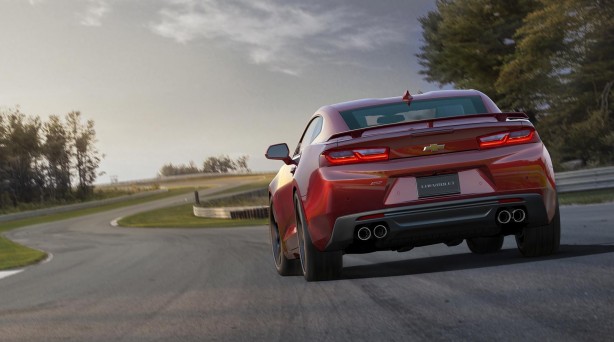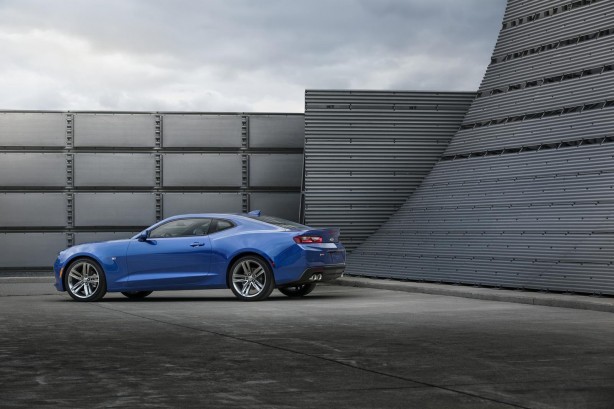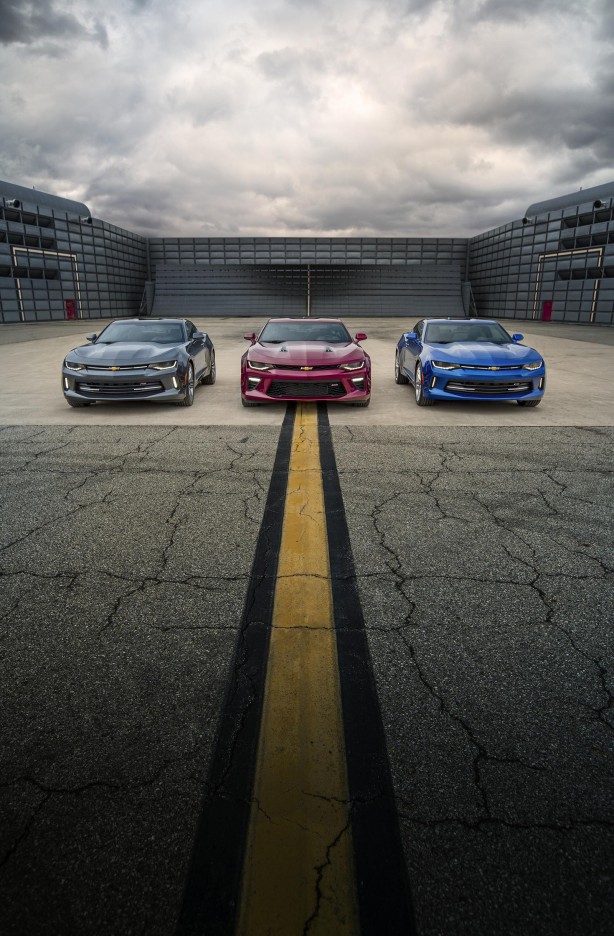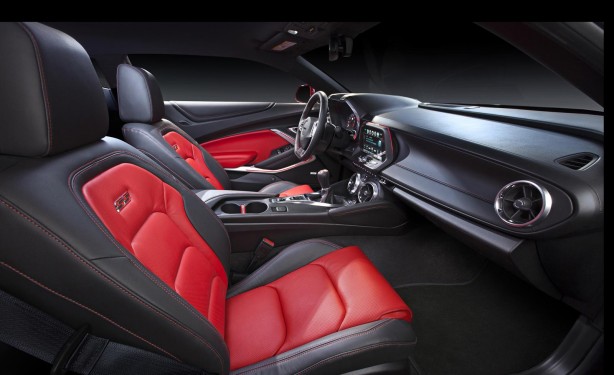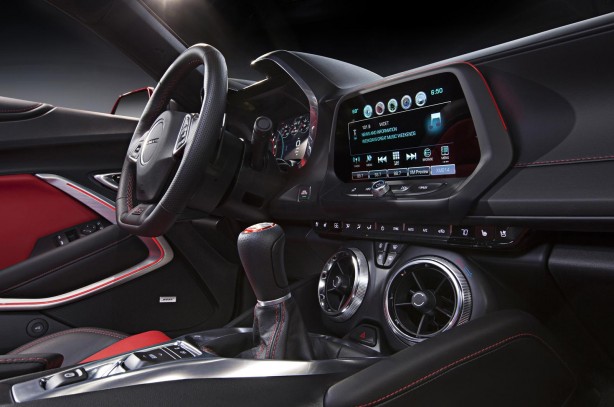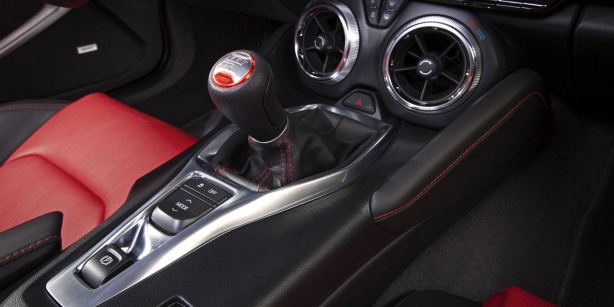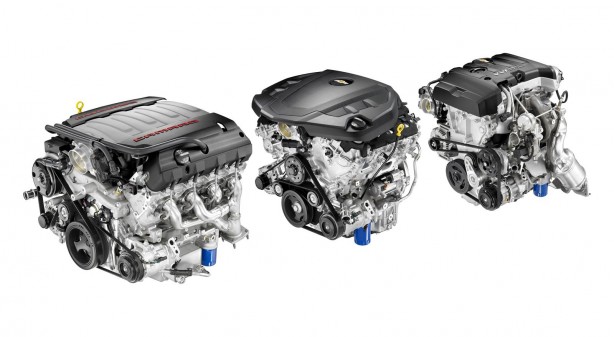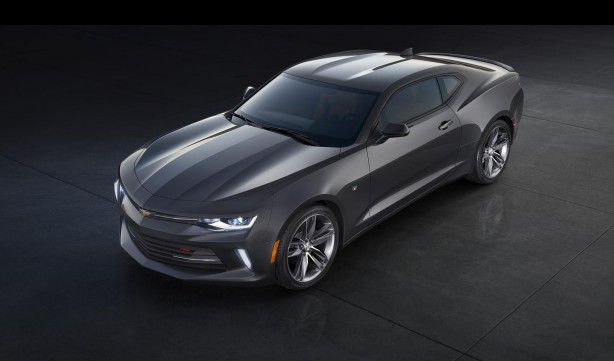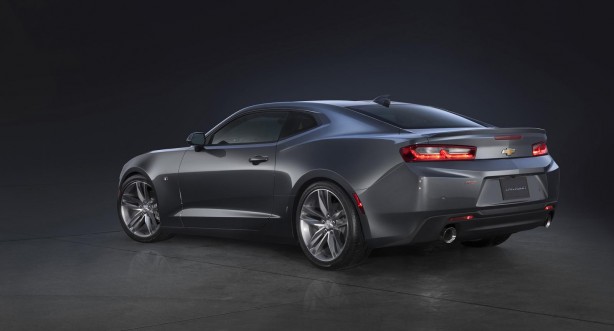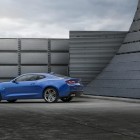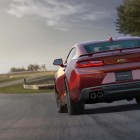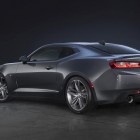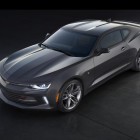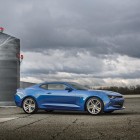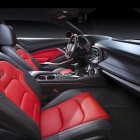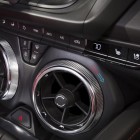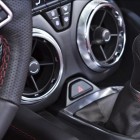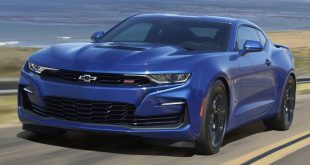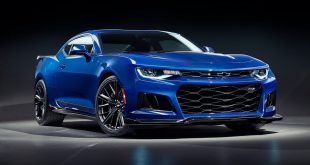Chevrolet has finally taken the veil off the 6th generation 2016 Camaro, which at first, glance looks like a minor facelift.
That’s far from the truth. In fact, the changes are rather significant, from an all-new platform that is 90kg lighter, yet stiffer. Around 70% of the car’s architectural components have been developed specifically for the new Camaro.
While Chevrolet has taken an evolutionary approach to the muscle car’s styling, the new Camaro is more athletic-looking and has spent 350 hours in a wind tunnel to reduce drag and improve downforce.
“From every angle, you’ll never mistake this for anything but a Camaro,” said Tom Peters, design director. “We’ve taken that iconic design and amplified its proportions to reflect a more dynamic driving experience – like the T-shirt on a muscular physique.”
The front of the Camaro is defined by a cross-car grille/headlamp aperture, a signature cue that dates to the first generation. The new, expressive execution gives the Camaro a stronger, more determined face. It also displays a new, nearly fastback profile that flows into the pronounced haunches of the rear fenders, enhancing the wider, more aggressive stance.
A more expressive take on the taillamps blends the horizontal aesthetic of the first generation with a dual-element theme and aggressive tapers for a contemporary appearance. Additionally, SS models have a unique rear spoiler.
Standard lighting includes halogen projector beam headlamps and taillamps. RS and SS models add high-intensity discharge, or HID, projector-beam headlamps and LED “signature lighting” daytime running lights – including a sweeping LED lightpipe integrated in the headlamp and an LED light pipe integrated into the front fascia. RS and SS models also feature LED lighting for the rear taillamps, including auxiliary LED light guides that mirror the shape of the front signature lighting.
Aerodynamic details include a subtle “air curtain” on the front fascia, which guides air around the wheels rather than into the wheelhouses, reducing drag. Also, the Camaro SS has a unique front fascia with integrated brake cooling ducts and a unique bonnet with functional air vents, which improve engine cooling and reduce front lift.
All models share a more pronounced, sculpted roof panel that improves the structural rigidity of the roof for greater refinement. The roof is assembled using laser brazing, eliminating the need for “ditch channel” seams and cover trim, giving the car a sleeker appearance while saving half a kilogram compared to traditional spot welding.
There’s also a new interpretation of the Camaro’s iconic red, white and blue “banner” insignia, displayed on the front guards.
There’s also greater emphasis on customer personalization with a wider range of choices, including 10 exterior colours, five interior colour combinations, lighting options and a full complement of dealer-available accessories at launch, such as wheels and stripe packages.
Like the exterior, the interior is completely new yet instantly recognizable. The instrument panel, for example, is a departure from the previous model, but retains the Camaro’s familiar dual-binnacle-style instrument cluster hood.
“Given the level of technology and performance, the interior had to be modern and driver focused.” said Ryan Vaughan, interior design manager.
“But although the interior is an all new design, it is still instinctively recognizable as a Camaro.”
The instrument cluster features analogue instruments to provide the driver with essential performance information, as well as an available eight-inch-diagonal high-definition centre screen that can be configured to provide additional information including navigation, performance, and infotainment features.
Another eight-inch screen, integrated in the centre of the instrument panel, serves as the interface for the enhanced, next-generation MyLink system.
The new centre console and centre stack are designed with high performance driving in mind. For example, the heating and cooling controls are integrated into rings surrounding the air ducts. Eliminating the associated buttons makes the cabin feel more spacious, and makes adjusting the temperature easy.
An electronic parking brake replaces the previous mechanical parking brake handle. This enabled the cup holders to be repositioned for improved range of motion when shifting in manual-transmission models.
The new Camaro is available with six different powertrain combinations, each is said to be designed to deliver improved performance and efficiency.
The Camaro LT’s standard engine is a new 2.0L Turbo, rated at 275 horsepower (205 kW) and 295 lb-ft of torque (400 Nm). It offers a wide torque band with 90 percent of peak torque available from 2,100 rpm to 3,000 rpm, and maximum torque from 3,000 to 4,500 rpm. The 2.0L turbo is claimed to deliver 0-60 mph in less than six seconds and offer more than 30 mpg (7.8L/100km) on the highway (GM-estimated).
An all-new 3.6L V6 is available in the Camaro LT, producing and 335 horsepower (250 kW) and 284 lb-ft of torque (385 Nm). The engine incorporates a trio of technologies to improve efficiency and performance, including direct injection, variable valve timing and, for the first time, Active Fuel Management (cylinder deactivation), which disables two cylinders under light throttle applications to enhance efficiency.
The 2.0L turbo and 3.6L V6 engines are offered with a six-speed manual transmission or the all-new Hydra-Matic 8L45 paddle-shift eight-speed automatic transmission. It’s based on the Hydra-Matic 8L90 eight-speed, but scaled for the performance envelope of the smaller engines and offering an estimated 5-percent efficiency improvement over a comparable six-speed automatic.
The Camaro SS is powered by the 6.2L LT1 V8 engine introduced on the Corvette Stingray. About 20 percent of the components are specific for the Camaro’s architecture, including new, tubular “tri-Y”-type exhaust manifolds. It also offers advanced technologies such as variable valve timing, direct injection and Active Fuel Management (on automatic-equipped models) to help balance efficiency and performance. Output is rated at 455 horsepower (339 kW) and 455 lb-ft of torque (617 Nm), making it the most-powerful Camaro SS ever.
The LT1 engine is available with a standard six-speed manual transmission – with new Active Rev Match technology that “blips” the throttle for perfectly timed downshifts – or the Hydra-Matic 8L90 paddle-shift eight-speed automatic.
Each engine has been carefully tuned for a distinctive performance sound. All 2.0L turbo models feature active noise cancellation, which uses sound waves to cancel unwanted cabin noise. Models equipped with the available Bose audio system also feature engine sound enhancement, which amplifies the native sounds of the 2.0L turbo engine – and can be disabled based on the driver’s preference.
Both the 3.6L V6 and 6.2L V8 feature mechanical sound enhancers – resonators that direct induction noise from the engine bay into the cabin. Both engines are available with a dual-mode exhaust, which features electronically controlled valves that bypass the mufflers under acceleration, delivering improved performance and greater sound levels. With the dual-mode exhaust, drivers can personalize the exhaust sound, from a “stealth” mode to the most aggressive “track” mode.
All models are equipped with a new multi-link MacPherson strut up front and a five-link independent rear suspension while Magnetic Ride Control is making its debut on the Camaro SS. Stopping power comes courtesy of 320mm front rotors with four-piston calipers and 315mm rear rotors with single-piston sliding calipers on the Camaro LT. The range topping Camaro SS features 345mm Brembo front rotors with four-piston fixed calipers and 338mm rear rotors with four-piston fixed calipers.
The 2016 Chevrolet Camaro will be built at GM’s Lansing assembly plant in Michigan. No words yet on whether the car will be built in right-hand drive, which determines its availability in Australia.
 ForceGT.com Car News, Car Reviews, Video Reviews, Tuning and much more.
ForceGT.com Car News, Car Reviews, Video Reviews, Tuning and much more. 